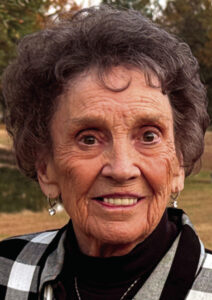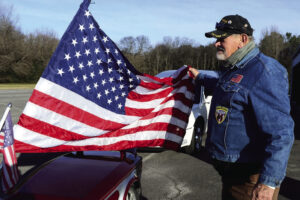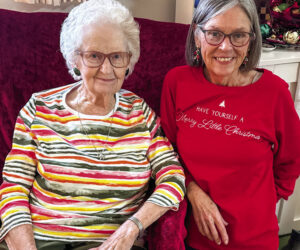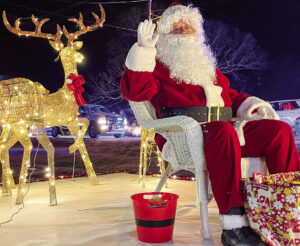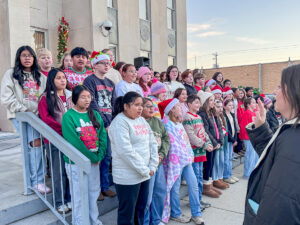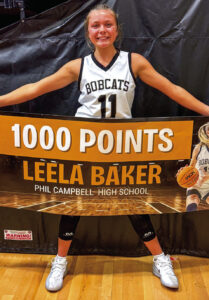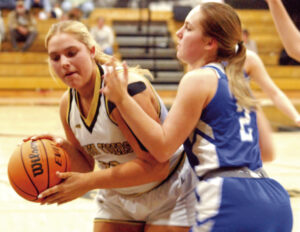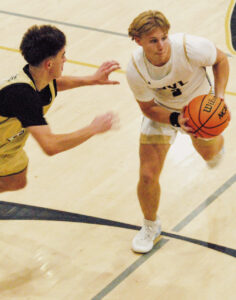Tharptown High School rocketry team blasts into second place in nation
Last year, THS placed tenth in the nation, and they placed ninth in the nation the previous year. Tharptown’s first launch in nationals this year was a 13.8, and their second was a one. In rocketry competitions, the lower the number, the better the score.
“We were off 9 ft. on the first launch, which gave us 9 points for our altitude, and we were a second off on our time,” explained team sponsor Marsha Inmon, “so that made our time score 4.8. Our total score for the first flight was 13.8.”
Their performance not only earns them plenty of recognition for a job well done, but also $15,000 for the team and $1,000 for the school. As one of the top 25 finishers, they received an invitation to participate in NASA’s Student Launch initiative to continue their exploration of rocketry with high-powered rockets and challenging mission parameters.
Teams at the national finals represented 27 states from Alaska to Florida and competed for a total of $100,000 in prize money and scholarships, split among the top 10 teams and winners of the marketing competition, presentation competition and best first-time finalist.
“We are so proud of these young adults and the hard-work they have put into this season,” Inmon said. “Our team is very committed. They’re an impressive group.”
She explained based on how the team did on the first flight, she knew that put them in a good position. “Based on past experiences, I knew the score was good enough to make it to the second round of flights, and we knew our place in the competition all rested with the second flight.”
Inmon said the altitude goal for the second flight was 825 ft. with a time goal of 41-44 seconds. “The wind was varying during the second round, speeding up and then calming,” she added, noting she, assistant coach Areanna Orozco and the parents watched and timed every flight.
“We knew the rockets were struggling to reach time requirements,” Inmon said, “and some were hitting thermals in the atmosphere and falling too slow while others were falling too fast I trust my kids. They know what they are doing, but you can’t control the weather, and you don’t know there’s going to be a thermal until the rocket starts falling and looks like it’s just hanging in the air.”
Inmon said she had told the students to watch a few flights before putting the rocket on the pad so they could make needed adjustments. “They were confident with their decisions and launched, and it was a beautiful flight. Our team mentor, Andrew Heath, heard the altitude first and said it was a one-point launch. The altitude on the second flight was 826 ft.”
THS team members are tenth-graders Angie Chavez and Kylee Beard (captains), Shyla Martinez, Adrionna Ashley, Angel Garcia, ninth-grader Isabella Hall and eighth-grader Addison Mardis. Chavez and Beard participated in last year’s competition; however, the other team members are new to rocketry. The team, along with eight others from North Alabama, took part in the national competition.
“As the second youngest and a first-year competitor, I feel honored to even have the opportunity to compete, and especially with my friends,” explained THS ninth-grader Isabella Hall.
“I feel good,” said THS tenth-grader Angel Garcia, first-time rocketry competitor. “Just getting to go to nationals was a cool experience, but to place second in the nation is more than enough.”
THS tenth-grader Shyla Martinez said the experience was a very positive one.
“Our hard work has paid off in an insane way,” Martinez said. “I honestly was just hoping for us to make it into the second round, but to make it to second place? That’s something I couldn’t even think about us doing, yet we did it, and I’ve never felt so excited.”
For tenth-grader Adrionna Ashley, it’s an experience she’s “extremely happy” about.
“Being second in the nation is a great achievement,” Ashley said. “Hearing the speaker announce our school’s name as second place was such an exhilarating experience. I always had faith in our team, but I never would’ve imagined we would make it this far.”
Ashley said the accomplishment inspires the team to work even harder and “hopefully take first place next year.” She said as long as the team sticks together and continues to support each other, they “can achieve anything.”
She commented on how everyone plays an important role. “Each of our members have their own strengths that unite us to make an amazing team,” Ashey added. “That being said, we could not have made it this far without all of our supporters, and I would like to thank Andrew Heath (our team mentor), Perla Chavez and anyone else who has given their time or money for the sake of our team, including our parents.”
Chavez said she still feels like she’s dreaming when she thinks about the team winning second place.
“It just feels unreal because when my team first started, we had more unsuccessful launches than successful ones, but we learned from our mistakes with help from our mentor, Andrew Heath,” she added. “Next year, we are determined to win first place.”
The accomplishment follows months of preparation designing, building and testing a rocket capable of meeting rigorous mission parameters set by the contest’s sponsors – the Aerospace Industries Association (AIA), National Association of Rocketry and more than 20 industry partners.
“I am extremely proud of these students!” said THS principal Bart Moss. “They have worked hard all year long in Mrs. Inmon’s room or out in the field with practice launches. The skills these students have learned throughout the year and in competition are skills that will help them later in life, in college and in their careers.”
Moss said he extends thanks to Inmon and Arianna Orozco for their leadership with the rocketry program.
“Without their hard work and guidance, our students wouldn’t have had this opportunity,” he added.
REACHING FOR VICTORY
At the national finals, a Friday night coin flip determined that competing teams had to launch the rockets to 875 feet with a flight duration of 43-46 seconds in the first round of competition. The top 42 teams conducted a second launch that was required to reach 825 feet with a flight duration of 41-44 seconds.
“If today’s results are any indication, the future is bright for American science and engineering,” said Eric Fanning, president and CEO of AIA.
As participants launched their rockets on Saturday, an American Rocketry Challenge alumnus was circling above them in space. NASA astronaut Warren “Woody” Hoburg competed in the National Finals of the inaugural American Rocketry Challenge in 2003.
Twenty years later, in March 2023, Hoburg blasted off to space as the Pilot of NASA’s SpaceX Crew-6 mission to the International Space Station (ISS). Hoburg provided a video message while aboard the ISS to congratulate and encourage the National Finalists.
THE PATH TO NATIONALS
“We performed our qualifying flights at THS on March 26, and then we had to wait to find out if the score would be high enough for the national competition,” explained Inmon. “We found out April 12 that our team had qualified.”
This year’s competition featured nearly 800 teams and 4,500 students from 45 states. For 2023, each team was required to design, build, and launch model rockets that safely carried one large hen egg to an altitude of 850 feet, stayed airborne for between 42 and 45 seconds and returned the rocket to the ground safely.
Adding to the challenge, the rocket had to be built in two parts that separated after apogee and landed with their own parachutes; one section of the rocket containing the egg and altimeter, and the second containing the rocket motor(s).
“Congratulations to this year’s American Rocketry Challenge competitors and winners,” said Greg Hayes, Chairman and CEO of Raytheon Technologies. “Watching these students strategize, plan, build, and adjust to uncontrollable variables while fine tuning their performance is truly inspiring,” he added.
“These skills are critically needed in the next-generation aerospace and defense workforce to redefine how we connect and protect our world. We look forward to seeing what they accomplish in continuing their education and into their careers.”
More: Blasting off to success


